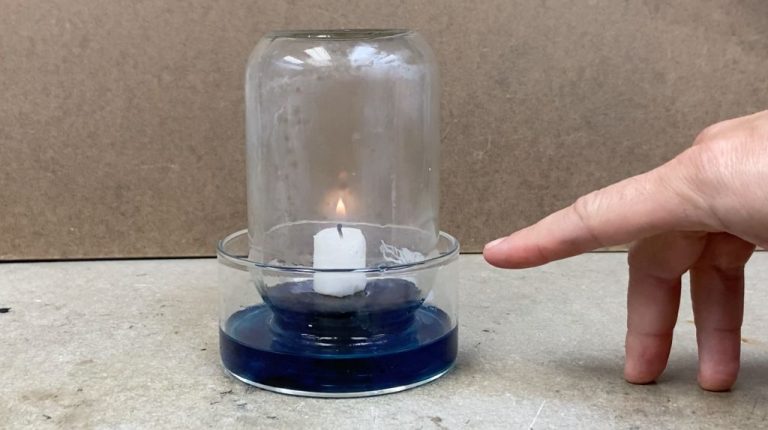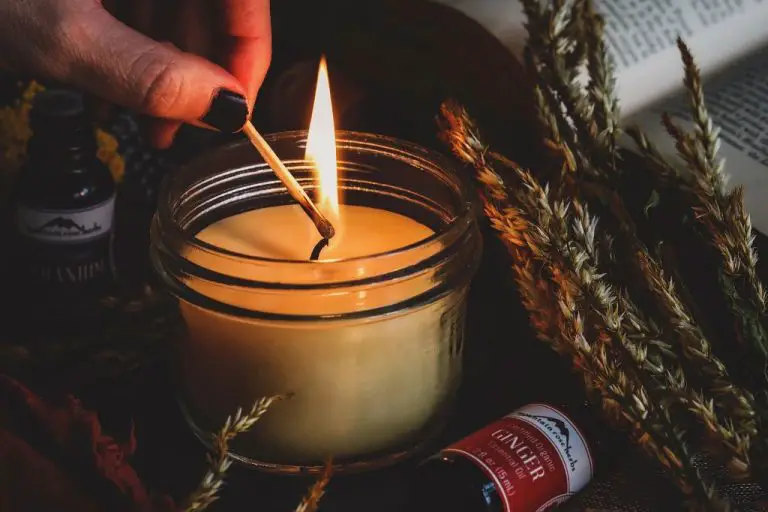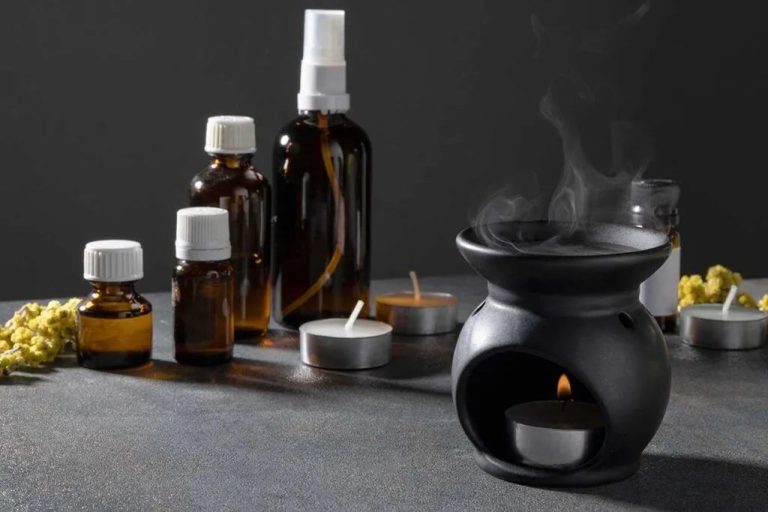How Does A Scented Candle Work?
A scented candle is a candle that contains fragrance oils to provide a pleasant smell while the candle burns. The oils are added to wax that comes from sources like soy, palm, paraffin, or beeswax. As the candle burns, the heat from the flame melts the wax near the wick and this liquified wax travels up the wick via capillary action. The heat then vaporizes the fragrance oils from the liquified wax pool around the wick, releasing the aroma into the air. The aroma fills the surrounding space, providing a pleasant sensory experience. Scented candles are popular home décor and gifting items used to make indoor spaces smell nice and create an ambient atmosphere.
Wick
The wick is a crucial part of how a scented candle works. Its purpose is to deliver the flame into the wax to melt it and release the fragrance. Wicks are typically made from materials like cotton, paper, wood, zinc, or tin https://candles.org/elements-of-a-candle/wicks/. Cotton is one of the most popular wick materials because it burns evenly and doesn’t create a lot of soot. The wick needs to be stiff enough to stand upright but also flexible so it bends over as it burns. This causes the tip to burn off so that the wick doesn’t drown in the wax. The thickness of the wick is important and needs to match the type of wax used. A wick that is too thin may not burn properly while one that is too thick can get too hot and tunnel down into the wax pool.
Wax
There are several different types of wax commonly used to make scented candles, each with their own properties and characteristics. Some of the most popular types include:
Paraffin wax – This is the most widely used candle wax. It is a byproduct of petroleum refining and is highly refined and odorless. Paraffin wax is inexpensive, has an excellent scent throw, and can hold a wide range of fragrance oils. However, some find the source of paraffin wax concerning from an environmental standpoint.
Soy wax – Made from hydrogenated soybean oil, this renewable and sustainable wax burns cleanly. Soy wax has a lower melting point than paraffin so the wax pool tends to be wider. The natural scent can interfere with some fragrances.
Beeswax – Beeswax has a lovely natural honey aroma. It is expensive but pairs nicely with natural essential oil scents. Beeswax candles burn brighter and slower than paraffin.
Palm wax, coconut wax, and gel wax are some other alternatives, each with their own advantages and disadvantages. The type of wax impacts the appearance, scent throw, burn quality, cost, and other factors.
Fragrance Oils
Fragrance oils are essential for giving candles their signature scents. They are composed of synthetic aroma compounds or natural essential oils that have been diluted with a carrier oil. The main purpose of fragrance oils in candles is to provide fragrance when the candle is burned, releasing the aroma into the air.[1]
There are many different types of fragrance oils used in candles, including:[2]
- Floral scents like rose, jasmine, lavender
- Fruity scents like apple, strawberry, citrus
- Herbal scents like chamomile, sage, eucalyptus
- Woodsy scents like pine, cedar, sandalwood
- Spicy scents like cinnamon, clove, ginger
The fragrance oils are carefully chosen to complement the wax and wick of the candle. Popular fragrance oil blends combine multiple scents for complex aromas. The concentration of fragrance oil can be adjusted to make the candle scent stronger or lighter.
Adding Scent
The scent of a candle comes from fragrance oils that are added to the hot wax. Fragrance oils are concentrated aromatic compounds that are specifically formulated for candle making. While essential oils can also be used, fragrance oils are much stronger and provide better scent throw. Most candle makers recommend adding between 5-10% fragrance oil by weight of the wax. It’s important to add the fragrance oil at the proper temperature – generally around 185°F for soy wax and 200°F for paraffin. If added while the wax is too hot, the fragrance volatilizes and burns off. If added while too cold, the fragrance doesn’t incorporate fully into the wax. Proper incorporation ensures the fragrance oils are dispersed evenly throughout the wax so the scent throws consistently as the candle burns. The wax and fragrance oil should be stirred thoroughly after adding to fully blend. Correctly adding fragrance at the ideal temperature is crucial for creating strong, long-lasting scented candles.
Sources:
https://www.candlescience.com/learning/how-to-make-candles-that-smell-great/
https://www.thesprucecrafts.com/make-candles-release-scent-better-516818
Heating the Wax
As the candle burns, the flame melts the solid wax into a liquid state known as the melt pool. The heat of the flame vaporizes the liquid wax and breaks down the hydrocarbons into molecules of hydrogen and carbon (Candle Science, https://candles.org/candle-science/). This allows the fragrance oils to be released into the air. The melt pool is key to dispersing the candle’s scent. The wax needs to be heated to a liquid state for the fragrance oils to evaporate and scent the surrounding area.
Some factors that affect the melt pool are the diameter of the candle, wax type and quality, and room temperature. A larger melt pool will allow more fragrance to be released. Harder waxes like soy and paraffin need higher temperatures to melt and achieve an ideal melt pool for fragrance dispersion. Beeswax and vegetable waxes melt at lower temperatures. The warmer the room, the faster the wax will melt as well (What is the relation ship of heat to fragrance to inhance scent, https://www.justanswer.com/general/000mo-relation-ship-heat-fragrance-inhance-scent.html).
Wick Burning
The wick is a key component that enables a candle to burn. The wick is made of fiber that has been twisted or braided together. This fiber is absorbent and will draw up melted wax via capillary action, which is the ability of a liquid to flow through narrow spaces without the assistance of gravity. As the candle is lit, the flame melts the wax at the top of the candle. The wick then soaks up this liquid wax like a straw and brings it into the flame.
According to the Candle Science website, “Capillary action is the secret behind a candle’s wick. The wax gets drawn up the wick and into the flame where it vaporizes and combusts.” https://candles.org/candle-science/ This capillary action along the fibrous wick sustains the candle’s flame. The heat of the flame continues melting more wax, which gets continuously drawn up the wick, creating a self-sustaining burning cycle as long as there is wax around the wick.

Scent Throw
Scent throw refers to how well a scented candle’s fragrance fills the surrounding area. It is a measure of how far the scent travels and how strongly it can be smelled. Good scent throw is important so the candle’s aroma can be enjoyed in the intended space.
There are several factors that impact a candle’s scent dispersal and throw (Harlem Candle Company):
- Wax type – soy, paraffin, or beeswax candles will have different throw capabilities
- Fragrance oil strength and quality
- Wick size – larger wicks create more heat to disperse scent
- Room size and ventilation – scents diffuse more easily in smaller spaces
- Burn time – candles release more fragrance the longer they burn
- Ambient temperature – heat helps fragrance oils become airborne
Testing different candle variations can help determine the ideal design for maximizing scent dispersal. But overall, finding a wax, wick, and fragrance oil blend that work well together is key for excellent throw.
Safety
When burning scented candles, it’s important to be mindful of safety. According to research from the New York Times, scented candles release various vapors and particles into the air when burned, but studies suggest using them is generally safe if some precautions are taken.
One key safety concern is fire. It’s important to keep candles away from flammable materials and out of reach of children and pets. Never leave a burning candle unattended. Make sure candles are in stable holders on an even, hard surface. Burn candles in a well-ventilated room and avoid burning multiple candles close together. Extinguish candles when 1/2 inch of wax remains to prevent glass breakage or excessive smoke.
Another potential concern is inhaling toxic chemicals. Studies show scented candle emissions contain some potentially hazardous chemicals like benzene and toluene. However, research suggests the levels present during normal candle usage are very low and not a significant health risk for most people. Those with respiratory conditions or sensitivities may wish to avoid scented candles or limit exposure. Properly ventilating rooms when candles are burned can help reduce chemical exposures.
Overall, with reasonable precautions, scented candles can be safely enjoyed in moderation. But be sure to follow fire safety guidelines, trim wicks, allow proper ventilation, and closely supervise burning candles.
Conclusion
In summary, scented candles work through a combination of wax, wicks, fragrance oils, and heat. The wax provides a solid base which holds the wick upright and allows the candle to retain its shape. The wick is made from materials like cotton that burn slowly and evenly when lit. Fragrance oils are added to the hot wax prior to pouring which allows the oils to bind to the wax molecules. When the candle is lit, the wick burns and melts the wax around it, releasing the fragrance oils into the air through diffusion and evaporation. As the hot wax pool spreads out, more fragrance is released. The heat from the flame is what enables the fragrance to become airborne so humans can smell the scent. The aroma profile shifts over the course of the burn time as different scent notes are released. Understanding this process allows manufacturers to create candles with customized scents, burn times, and aroma experiences.






